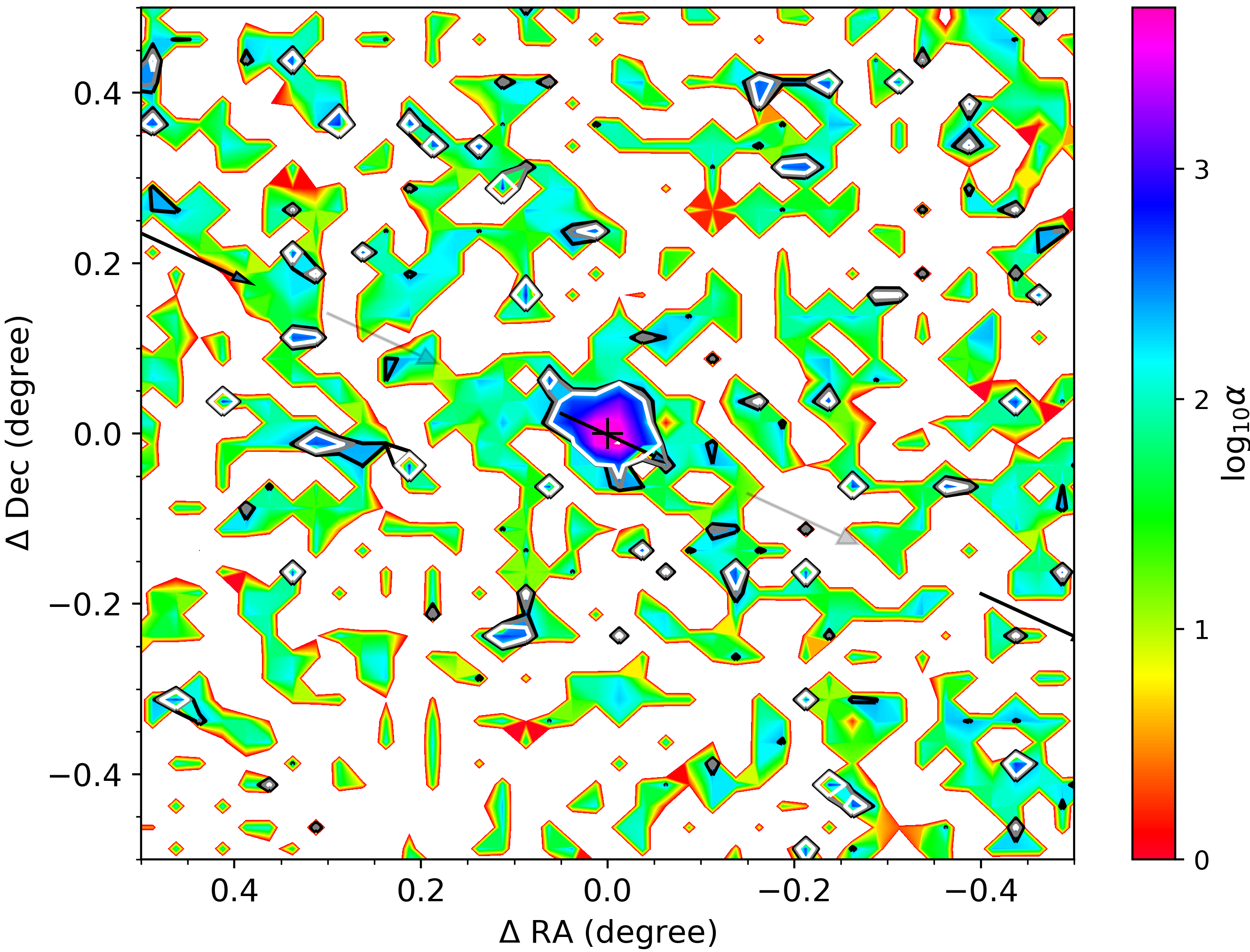
A recent picture by the DESI Legacy Imaging Survey features a mysterious globular cluster Whiting 1 in the Galactichalo. Then, who is Whiting 1 and why do we care about it?
Whiting 1 is a faint and young globular cluster embedded in the Sagittarius stream. It was initially reported as an in-situ formed globular cluster in the Galactic halo, however, its young age and moderately rich metallicity are against our common sense about the typical Galactic globular clusters.
A comparable age-metallicity relation as well as kinematics to that of the Sagittarius stream makes Whiting 1 a member of a rare class of objects. Astronomers are more inclined to believe Whiting 1 is a child of the Sagittarius dwarf galaxy.

Fig. 1 Image of Whiting 1. (Image by DESI Legacy Imaging Survey)
In the past years, the fact that Sagittarius dwarf galaxy can host globular clusters and contribute to the building up of the Galactichalo is firmly believed. Regard to Whiting 1, it was possibly a cluster born in the Sagittarius dwarf galaxy and immigrated to our Galaxy along the Sagittarius stream by the Galactic accretion. This is a good story about its origin, but speculation needs to be confirmed.

Fig. 2 Sagittarius dwarf galaxy accreted by the Milky Way. (Image by Gabriel Pérez Díaz)
The best way to explore the origin of Whiting 1 is to find relationship between the cluster and the Sagittarius dwarf galaxy. In the past, studies mainly devoted to compare cluster parameters to the Sagittarius dwarf galaxy, however, due to lack of deeper data, there was no new progress for a long time.
Different from traditional studies, a recent study by Dr. NIE Jundan and her colleagues from the National Astronomical Observatories of the Chinese Academy of Sciences (NAOC) uses a new approach to explore the origin of Whiting 1: They start with the morphology of the cluster.
This result was published in The Astrophysical Journal.
"If Whiting 1 is indeed associated with the Sagittarius dwarf galaxy, its morphology should show some tentative spatial connection with its progenitor. But this needs deep data because the cluster is very far away from us," said Dr. NIE, first author of the study.
This research takes the advantage of the data depth of DESI Legacy Imaging Survey to explore potential connections. DESI Legacy Survey is one of the deepest image surveys in our new century. It can go deeply enough to reach Whiting 1.
"With DESI, we can drive straightly to the homeland of Whiting 1. Thus, more members of a common lineage can be discovered. With enough member stars, we can uncover the real face of this cluster," said Dr. NIE.
The research uses the DESI data to filter out all the possible members of Whiting 1 and take a make-up free family photo for them. The two tidal tails on both sides of the cluster are particularly eye-catching. Its shape and extension are a direct evidence supporting Whiting 1's association with the Sagittarius dwarf galaxy. It echoes that Whiting 1 was a pre-existing globular cluster in the Sagittarius dwarf galaxy, and later immigrated to our Galactic halo with its parents.
The intriguing origin of Whiting 1 makes it a perfect example to study the formation of the Galactic clusters, and this work provides additional evidence that dwarf galaxy can host globular clusters and contribute to build the Galactic halo.
"With DESI future spectra data, we can further learn how all the children of Whiting 1 play in their yard," said co-author Dr. ZOU Hu, who is also a DESI member. "We believe at that time, DESI can explore more than what we currently have."

Fig. 3 The raw density map of Whiting 1. (Image by Nie et al.)

86-10-68597521 (day)
86-10-68597289 (night)

52 Sanlihe Rd., Xicheng District,
Beijing, China (100864)

